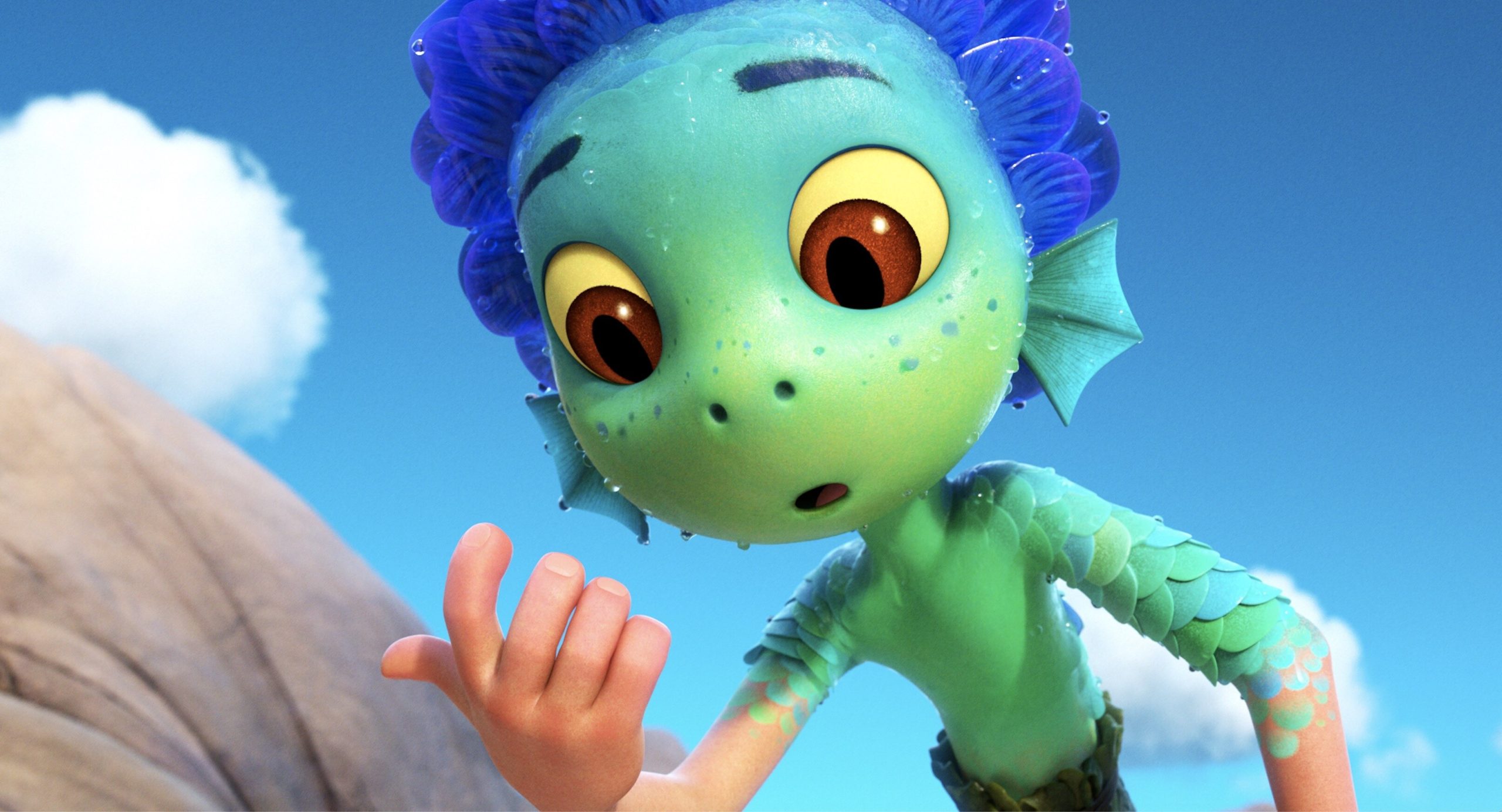At the conclusion of Pixar’s Luca, the titular sea monster boy faces a pivotal choice about his future. After a summer filled with friendship, adventure, and self-discovery, Luca must say goodbye to his family and his best friend, Alberto. The scene is emotional, leaving both the characters and the audience teary-eyed. Fortunately, the film provides a sense of closure through an epilogue in the credits: a series of still drawings that reveal what happens to the main characters after the story ends. These images offer insight into how their lives continue, highlighting themes of growth, friendship, and family.
Luca, directed by Enrico Casarosa, is set in the picturesque coastal town of Portorosso on the Italian Riviera. The story follows Luca Paguro, a young sea monster who spends his days under the sea herding goatfish. His life changes when he meets Alberto, another sea monster who lives mostly on the surface and claims to be an expert in human affairs.
When Luca’s parents threaten to send him back to the deep sea with the intimidating Uncle Ugo, he decides to run away with Alberto. On land, they befriend a fiery girl named Giulia and confront the local bully, Ercole Visconti. This summer becomes a transformative period, filled with adventures that test their courage, loyalty, and ability to embrace the unknown.
Alberto and Luca Learn Courage, Loyalty, and Growth Through Family and Friendship
One of the film’s more emotional revelations is Alberto’s family history. Initially, he claims that his father is often away, but Luca eventually discovers the painful truth: Alberto was abandoned by his father long ago. Alberto had kept a tally of the days, hoping his father would return, but eventually realized he was on his own. This history explains Alberto’s fear of losing Luca’s friendship and his jealousy toward Giulia. The film resolves this by giving Alberto a loving parental figure in Massimo, Giulia’s father. Massimo offers to let Alberto live with him, providing the stability and guidance he has been missing, while also giving Massimo someone to care for.

A central plot point revolves around Luca and Alberto’s shared dream of owning a Vespa, which they believe can take them anywhere. In a twist, Alberto uses the Vespa to fund Luca’s train ticket to school in Genova, allowing him to pursue his curiosity and education. Luca’s decision to leave home reflects his growing desire to explore the world, fueled by his friendships and the experiences he’s had in Portorosso. Though torn between staying with his family and embracing new opportunities, Luca’s choice demonstrates courage, independence, and a readiness to grow beyond the familiar confines of his hometown.
The overarching message of Luca can be summarized by the adage, “If you love something, let it go.” Luca’s parents, though initially hesitant, support his journey to school as an act of love. Similarly, Alberto’s willingness to sell the Vespa to help Luca reflects his loyalty and care. The film underscores the importance of allowing loved ones to explore new opportunities in order to grow, even when separation is emotionally difficult. Friendship, trust, and parental support are central to this theme, reinforcing that letting go is sometimes necessary for the happiness and development of those we care about.
Luca’s Journey Shows Friendship Growth and Acceptance Shaping Life Beyond Portorosso
In the movie’s final scene, Luca leans out of the train as it departs for Genova, looking back at Portorosso, Alberto, and his parents. Despite the rain and his initial sadness, he sees sunlight over Alberto’s island, symbolizing hope and the enduring strength of their friendship. This moment emphasizes Luca’s emotional growth, as he overcomes fear and uncertainty through his friendships with Alberto and Giulia. The mantra “Silencio, Bruno!” encourages him to face challenges head-on, showing that courage and trust can help navigate life’s changes.
The film’s end credits provide snapshots of Luca’s life after his summer in Portorosso. He thrives at school with Giulia, openly showing his sea monster identity and engaging in learning experiences like watching movies, exploring libraries, and stargazing. He also maintains strong bonds with Alberto and his family through letters, demonstrating that friendships can endure despite physical distance. Giulia, once treated as an outsider, finds a kindred spirit in Luca, highlighting the film’s emphasis on acceptance, shared interests, and belonging.
Back in Portorosso, Alberto gains a sense of family through Massimo and the Paguros. Sea monsters, once feared by the townspeople, are gradually accepted as neighbors rather than threats. The end credits show playful interactions between the characters, including visits between the land and underwater worlds, a growing litter of kittens, and Alberto’s pet tortoise, Caligola. A post-credits scene humorously features Uncle Ugo caring for a goatfish in his deep-sea home, adding a lighthearted conclusion while maintaining the film’s themes of family, community, and growth.



